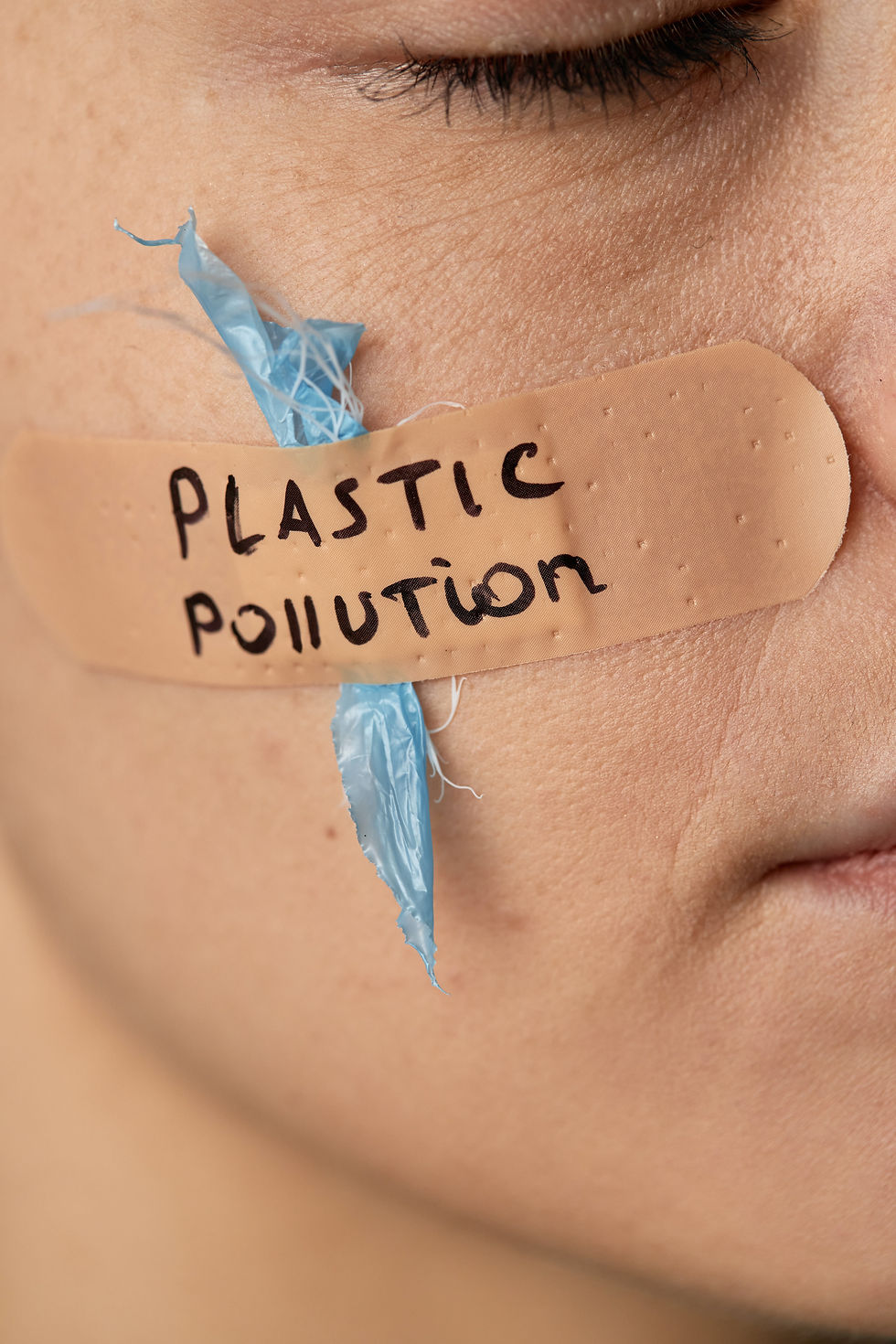The Beginning of the End for Single-Use Plastics: Edible Packaging
- Deniz Saygi

- Mar 21, 2023
- 4 min read
Unfortunately, the problem of plastic waste is still not effectively managed globally: a significant proportion of waste cannot be collected. Most of the collected waste is either incinerated or deposited in open-air landfills. The incineration of plastics causes gases and microplastics to be dangerous to the environment and health while entering the atmosphere. In addition, harmful chemicals leaking from waste kept in the open air contaminate drinking water. It also should be noted that very few of the hundreds of thousands of different types of plastics can be recycled efficiently. Hence, we all need to be more sensitive to this alarming problem.

Positively, the growing reaction to plastic pollution has started to come from the public and politicians increasingly: The European Union announced a ban on some single-use plastics. In this regard, it was decided that from 3rd July 2021, single-use plastic plates, cutlery, straws, balloon sticks, and cotton buds would not be placed on the markets of the EU Member States. Moreover, the pressure from public opinion is also laying a strong foundation for the growing market demand for sustainable alternatives.
A Germany-based company offers a solution
A ‘’modern alchemical work’’ that solves the ever-increasing plastic waste problem and transforms plastic into something useful, such as composting that feeds the soil, is now possible: ‘’Edible packaging’’. Traceless, a women-led initiative based in Germany that offers an edible alternative to single-use plastic packaging, has won the Green Alley Award for innovation in the circular economy.
Traceless has designed a technique to turn agricultural waste, such as starch or brewer’s yeast waste, into a range of films, coatings and solids. Since they are made from plant residues, they can break down and become fully compostable within two to nine weeks, depending on their thickness and size. This cycle also ensures that these recycled materials can be added directly to the in-home compost bin or added to anaerobic digesters to help produce biogas.
Dr Anne Lamp, one of the co-founders of Traceless, underlines that even if these edible packagings reach the environment or oceans, they will completely decompose into CO2 (Carbon Dioxide) and H2O (Water) – without any harmful effects – being eaten by animals and leaving no residue.
This innovation paved the way for Traceless to win the 2021 Green Alley Award. Launched in 2014 by Landbell Group, a leading provider of environmental and chemical compliance solutions, the Green Alley Award recognises initiatives that continue to thrive and push the boundaries in the circular economy, providing a fund for projects to develop and grow.
Unlike some biofuels, Traceless’ preference for agricultural waste in packaging production avoids the consumption of elements that need to be taken from the soil in food production. Moreover, these innovative packages do not contain any harmful additives, solvents or chemicals and save up to 87 per cent in terms of carbon emissions compared to other petroleum-based plastics concerning production management.
The Green Alley Award aims to encourage start-ups in the field of circular economies, such as Traceless, to use circular thinking when faced with urgent problems that need to be solved. Jan Patrick Schulz, the CEO of the Landbell Group, who presented the award, states that the Landbell Group aims to promote business models that combine a holistic and bio-circular approach to the conservation of existing resources with economic success.
So, what are other edible alternatives against to single-use plastics?
At the 2019 London Marathon, competitors were given bags filled with edible ‘’H2O (Water)’’ instead of plastic water bottles to quench their thirst. Developed by Notpla, these drink capsules are made of seaweed and plant materials that can be swallowed whole or mixed into the soil and sea without harming them.
Evoware turned its face to the oceans for edible alternatives. In order to produce compostable containers and packaging that are safe to eat, like the way Notpla have been producing, Evoware works with seaweed farmers in Indonesia to obtain the raw material and underlines that seaweed is increasingly recognised as a healthy food source.
US researchers are investigating a new combination of cow’s milk and natural clay, which, when blended together, becomes a strong, ultra-fine and compostable material [The term ‘’solid smoke’’ is used for this combination]. The potential uses for this pioneering innovation are manifold, ranging from packaging to insulation, without leaving any harmful residue.
The seaweed-based straws developed by Loliware are safe and compostable for each individual who is horrified by the pain exhibited in the photographs of turtles struggling with plastic straws and sea creatures that are suffering.
‘’Every piece of plastic ever created still exists. There are five trillion pieces of plastic in our oceans; an estimated ten million tons of plastic are produced every second. Single-use plastics should never be built to last; they should be designed to disappear,’’ declares Chelsea Briganti, the CEO of Loliware, in a statement sent to EcoWatch.
Closing thoughts
Although awareness of plastic pollution is rising, the steps and initiatives taken still need improvement. This situation undoubtedly undermines the development of the circular economy based on sustainability. In this sense, it is quite possible that start-ups such as Traceless have the innovation to respond to the increasing public concern about plastic waste and the capacity to satiate the growing interest for sustainable alternatives in the industry. Accordingly, such initiatives and projects should be further supported and incentivised by governments, NGOs and institutions such as the European Union.





